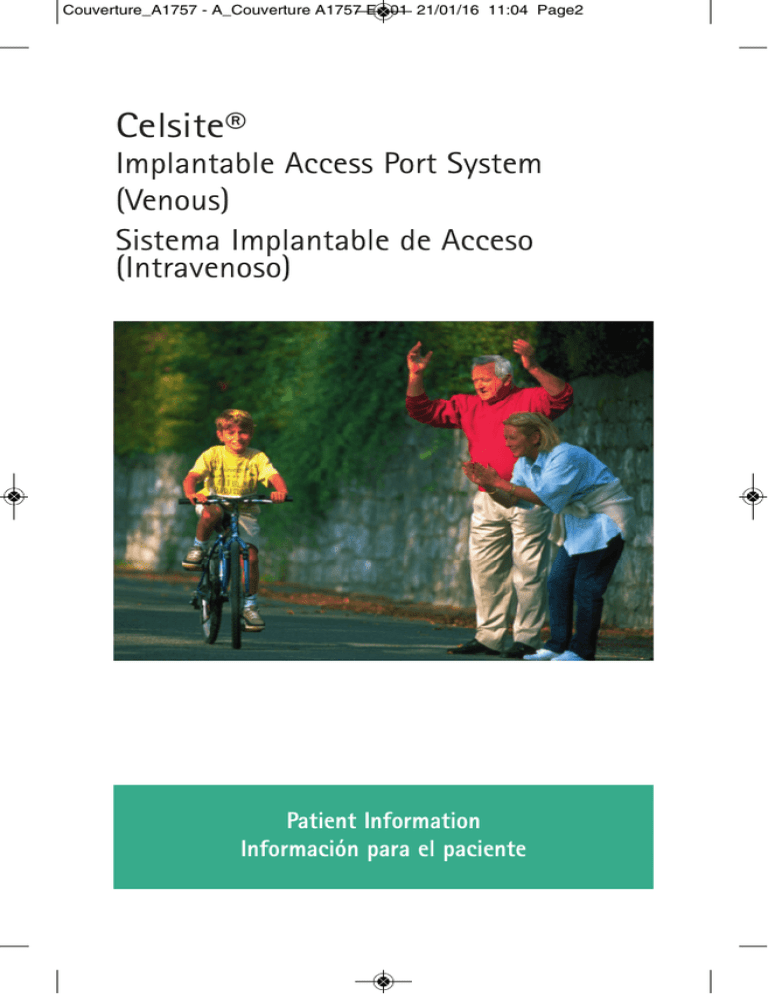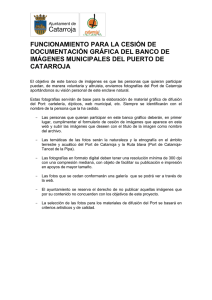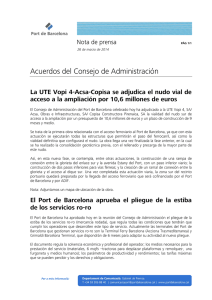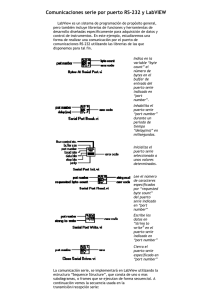Celsite - B. Braun Interventional Systems
Anuncio

Couverture_A1757 - A_Couverture A1757 Ed.01 21/01/16 11:04 Page2 Celsite® Implantable Access Port System (Venous) Sistema Implantable de Acceso (Intravenoso) Patient Information Información para el paciente Couverture_A1757 - A_Couverture A1757 Ed.01 21/01/16 11:04 Page3 Table of Contents Glossary....................................................................................................1 Purpose of the device ..........................................................................2 Description of the device ......................................................................3 How will the port be implanted?.......................................................4 Expectations of the device .................................................................5 When the device should not be accessed......................................6 Benefits and risks of the device........................................................6 Patient Identification Card.................................................................7 Índice Glosario ....................................................................................................9 Propósito del dispositivo...................................................................10 Descripción del dispositivo ...............................................................11 ¿Cómo se implantará el dispositivo? ............................................12 Expectativas del dispositivo.............................................................13 ¿Cuándo no se debe tocar el dispositivo? ...................................14 Beneficios y riesgos del dispositivo...............................................14 Tarjeta de Identificación del Paciente ..........................................15 INT_1757_Ed02_1757 Ed03 16/01/14 17:05 Page1 Glossary Your physician may use these terms when describing your treatment or care of the Celsite® Implantable Access Port System. Catheter: A thin plastic tube that delivers medication from the port. Access Port: The triangular shaped device with a septum where the needle is inserted. Heparin: A medication that helps keep the implanted port and catheter free of blood clots. Septum: Made from a self sealing material which allows the needle to access the port. Port site: Area of the body where the port is implanted. 1 INT_1757_Ed02_1757 Ed03 16/01/14 17:05 Page2 Purpose of the device The Celsite® Implantable Access Port System (Celsite® Access Port) is a small titanium and plastic implantable port designed to allow safe, repeated access for administration of chemotherapy, parenteral nutrition, blood sampling or transfusions, and administration of antibiotics or antiviral drugs. The Celsite® Access Port is completely covered by your skin and offers you total freedom of movement. This booklet is provided to help you understand how the Celsite® Access Port will be used in your treatment. This information is provided to you as a reference only. We urge you to discuss any questions you have regarding the device or treatment with your doctor or nurse. 2 INT_1757_Ed02_1757 Ed03 16/01/14 17:05 Page3 Description of the device The Celsite® Access Port has two components: a chamber called a port, and a thin plastic tube called a catheter. The port is a small triangular shaped device which has a raised center referred to as the septum. The septum is made from a self-sealing material. The septum is where the needle is inserted for delivery of medication and fluids. The medication is carried from the port through the catheter. All ports and catheters are latex and DEHP free. 1 3 2 4 1. Silicone septum 2. Plastic or Epoxy resin covering 3. Titanium chamber 4. Silicone or polyurethane catheter 3 INT_1757_Ed02_1757 Ed03 16/01/14 17:05 Page4 How will the port be implanted? A brief outpatient procedure is performed usually under local anesthesia. This means you will most likely be able to return home on the same day. The doctor will place the port just beneath the skin in a position most suitable for your treatment. For many patients, the port is placed on the upper part of the chest. The end of the catheter will be placed in a large blood vessel for venous access. With the system in place, you will see only a small bump under your skin. After your incision(s) heals, your doctor will let you know when you may resume your normal activities. Your skin’s natural barrier reduces the chance of infection or damage to the port. Call your doctor before visiting the dentist and ask if you should get a prescription for antibiotics beginning the day before and ending the day after dental work. Possible sites where a port may be placed 4 INT_1757_Ed02_1757 Ed03 16/01/14 17:05 Page5 Expectations of the device Your doctor or nurse can insert a needle through the skin and into the septum of the port. You may feel a slight prick as the needle goes through your skin. Topical anesthesia may be used at your physician discretion. This needle can then be used to deliver medications or other fluids, as well as withdrawal of blood samples for laboratory testing. Injections of medications can be done over a very short period of time (called a push or bolus injection) or over a prolonged period of time (called continuous infusion). A continuous infusion may last anywhere from one hour up to several days or longer. A dressing will usually be placed over the needle to stabilize it in the port and a small tube will connect the needle to the medication source. After each treatment, and occasionally between treatments, your doctor or nurse will rinse the port with a small amount of heparin solution to help keep the catheter clear of blood clots. If your treatments are spaced more than a month apart, you may need to have the port rinsed between treatments by your nurse. Your doctor will give you a schedule for these rinses. 5 INT_1757_Ed02_1757 Ed03 16/01/14 17:05 Page6 When the device should not be accessed It is important to examine the skin around the Celsite® Access Port daily to detect any changes in the appearance of the port implantation site. Remember: some redness and tenderness is normal in the area of the Celsite® Access Port for several days following implantation. Contact your doctor or nurse immediately if you notice any of the following symptoms of infection or other complications related to the port implantation. • Fever, chills, or other flu-like symptoms • Swelling, pain, pus, redness or burning sensation around the port incision • Shortness of breath or dizziness • Chest pain • Pain or swelling of neck, face, or arm on side of body where the implantable port is inserted Resist the urge to manipulate the port or the skin around the port. This could break the small stitches that hold the port in place or cause an infection. Benefits and risks of the device Your Celsite® Access Port provides a means for your clinician to easily deliver the medications and fluids that you need over an extended period of time. The access port, because it is implanted under your skin, is more comfortable and may carry a reduced risk of infection compared to external catheters. Patients with a Celsite® Access Port may safely resume activities such as swimming, bathing, jogging etc. after the incision heals. Potential risks associated with implantable Access Port Systems include, but are not limited to infection, catheter blockage or breakage, and swelling or pain in the area around the system. 6 INT_1757_Ed02_1757 Ed03 16/01/14 17:05 Page7 Patient Identification Card After the implantation of your access port you should have received a patient identification card. It is very important for people who have implanted devices to always carry the port patient identification card with pertinent medical information. This is particulary important in the event of an emergency, so medical personnel will be aware you have a port. 7 INT_1757_Ed02_1757 Ed03 16/01/14 17:05 Page8 8 INT_1757_Ed02_1757 Ed03 16/01/14 17:05 Page9 Glosario Su médico puede utilizar estos términos cuando le describa el tratamiento o cuidado del Celsite® Sistema Implantable de Acceso (intravenoso). Catéter: Tubo plástico, fino, que distribuye el medicamento desde la vía de acceso implantada. Vía de Acceso Implantada: Parte triangular del dispositivo con una membrana en donde se inserta la aguja. Heparina: Medicamento que ayuda mantener la vía de acceso implantada y el catéter, sin coágulos de sangre. Membrana: Hecho de un material auto-sellante que le permite a la aguja llegar a la vía de acceso implantada. Área de la Vía de Acceso Implantada: Área del cuerpo donde se implanta la vía de acceso. 9 INT_1757_Ed02_1757 Ed03 16/01/14 17:05 Page10 Propósito del Dispositivo El Sistema Implantable de Acceso (intravenoso) Celsite® es una pequeña vía de acceso implantable hecha de titanio y plástico, diseñada para permitir repetido acceso, sin riesgo, para la administración de quimioterapia, nutrición parenteral, muestras de sangre o transfusiones, y administración de antibióticos o medicamentos antivirales. El Sistema Implantable de Acceso (intravenoso) Celsite®, estará completamente cubierto por su piel y le ofrecerá total libertad de movimiento. Este panfleto se provee para ayudarle a comprender la forma en que el Sistema Implantable de Acceso (intravenoso) Celsite® será utilizado durante su tratamiento. Esta información se le provee solamente como punto de referencia. Le exhortamos a que consulte con su médico o enfermera sobre cualquier pregunta que tenga referente al dispositivo. 10 INT_1757_Ed02_1757 Ed03 16/01/14 17:05 Page11 Descripción del dispositivo El Sistema Implantable de Acceso (intravenoso) Celsite® tiene dos componentes: un compartimiento llamado vía de acceso implantada, y un tubo plástico, fino, llamado catéter. La vía de acceso implantada es la parte triangular del dispositivo con una elevación en el centro que se le conoce como la membrana. La membrana está hecha de un material auto-sellante. La membrana es donde se inserta la aguja para administrar el medicamento y fluidos. El medicamento pasa de la vía de acceso implantada al través del catéter. Las vías de acceso implantadas y los catéteres son sin látex y sin Di(2-etilhexíl)ftalato. 1 3 2 4 1. La membrana de silicona 2. Cubierta de resina plástica o de Epoxi 3. Cámara de titanio 4. Catéter de silicona o poliuretano 11 INT_1757_Ed02_1757 Ed03 16/01/14 17:05 Page12 ¿Cómo se implantará el dispositivo? Un procedimiento corto, ambulante, que se hace usualmente bajo anestesia local. Esto significa que muy probablemente usted regrese a su casa el mismo día. El médico le colocará la vía de acceso implantada justo debajo de la piel en la posición más apropiada para su tratamiento. A muchos pacientes se les coloca la vía de acceso implantada en la parte superior del pecho. El catéter será colocado en un vaso sanguíneo grande para tener acceso intravenoso. Una vez el dispositivo esté en su lugar, usted verá sólo una pequeña elevación debajo de la piel. Después de que se cure la herida o las heridas, su médico le dirá cuando podrá volver a sus actividades normales. La barrera de protección natural de su piel reduce las posibilidades de infección o daños a la vía de acceso implantada. Llame a su médico antes de visitar a su dentista y pregúntele si debería solicitar una receta de antibióticos, comenzando el tratamiento el día antes del trabajo dental y terminándolo el día después. Posibles aéreas donde se podría implantar la vía de acceso 12 INT_1757_Ed02_1757 Ed03 16/01/14 17:05 Page13 Expectativas del Dispositivo Su médico o enfermera pueden insertarle una aguja a través de la piel, y dentro de la membrana de la vía de acceso implantada. Es posible que usted sienta un pequeño pinchazo cuando la aguja atraviese la piel. Se podría utilizar anestesia tópica a discreción de su médico. Es entonces cuando esta aguja se puede utilizar para administrar medicamentos u otros fluidos, y también extraer muestras de sangre para exámenes de laboratorio. La inyección de medicamentos puede hacerse en un periodo de tiempo bastante corto (a esto se le llama push o infusión de bolo) o sobre un largo periodo de tiempo (infusión continua). Una infusión continua puede tomarse una hora, varios días o más. Usualmente se coloca un vendaje sobre la aguja para estabilizarla en la vía de acceso implantada y un tubito conectará la aguja con el suministrador de medicamentos. Después de cada tratamiento, y en ocasiones, entre un tratamiento y otro, su médico o enfermera le lavará la vía de acceso implantada con un poco de solución heparina para mantener el catéter sin coágulos de sangre. Si sus tratamientos están separados por más de un mes, usted podría necesitar que su enfermera le limpie la vía de acceso implantada entre tratamientos. Su médico le dará un itinerario para estos lavados. 13 INT_1757_Ed02_1757 Ed03 16/01/14 17:05 Page14 Cuándo no se debe tocar el dispositivo Es importante examinar todos los días la piel alrededor del Sistema Implantable de Acceso (intravenoso) Celsite®, para detectar cualquier cambio de apariencia en el área de la vía de acceso implantada. Recuerde: es normal que por varios días después del implante, tenga algo de enrojecimiento y sensibilidad en el área donde se implantó el Sistema Implantable de Acceso (intravenoso) Celsite®. Contacte inmediatamente a su médico o enfermera si nota alguno de los siguientes síntomas de infección u otras complicaciones relacionadas con la vía de acceso implantada. • Fiebre, escalofríos y otros síntomas gripales • Infamación, dolor, pus, enrojecimiento o sensación de quemazón alrededor de la incisión de la vía de acceso implantada • Espasmos respiratorios o mareos • Dolor en el pecho • Dolor o inflamación en el cuello, la cara o el brazo del lado del cuerpo en donde se le insertó la vía de acceso implantada. Contenga la tentación de tocarse la vía de acceso implantada o la piel alrededor de ésta. Esto podría romper los pequeños puntos que aguantan la vía de acceso implantada en su lugar o causar una infección. Beneficios y riesgos del Dispositivo Su Sistema Implantable de Acceso (intravenoso) Celsite® le provee a su médico un medio para administrar fácilmente los medicamentos y líquidos que usted necesita por un extenso periodo de tiempo. La vía de acceso implantada, es más cómoda porque se inserta debajo de su piel, y, comparada con los catéteres externos, puede que tenga un menor riesgo de infección. Pacientes con el Sistema Implantable de Acceso (intravenoso) Celsite® pueden regresar a sus , actividades normales como, nadar, bañarse, correr etc. después de que se le cure la incisión. Los riesgos potenciales asociados con el Sistema de Acceso Implantable incluyen, pero no se limitan a infección, bloqueo o ruptura del catéter e infamación o dolor en el área alrededor del sistema. 14 INT_1757_Ed02_1757 Ed03 16/01/14 17:05 Page15 Tarjeta de Identificación del Paciente Después del implante de su vía de acceso, usted debió recibir una tarjeta de identificación de paciente. Es muy importante que las personas a quienes se les hayan implantado dispositivos, siempre lleven su identificación de la vía de acceso implantada adjunto a la información del medicamento pertinente. Esto es particularmente importante en caso de una emergencia, para que el personal médico esté consciente de que usted tiene una vía de acceso implantada. 15 INT_1757_Ed02_1757 Ed03 16/01/14 17:05 Page16 16 Couverture_A1757 - A_Couverture A1757 Ed.01 21/01/16 11:04 Page4 Couverture_A1757 - A_Couverture A1757 Ed.01 21/01/16 11:04 Page1 en - Manufactured for: es - Fabricado para : B. Braun Interventional Systems Inc. 824 Twelfth Avenue Bethlehem, PA 18018 www.bisusa.org en - Technical Support: es - Apoyo Técnico: Tel : (800) 442-8362 en - Celsite® is a Registered Trademark. es - Celsite® es una marca registrada. A 1757-A en - Rx only es - Este producto sólo debe venderse a médicos o bajo prescripción facultativa.



